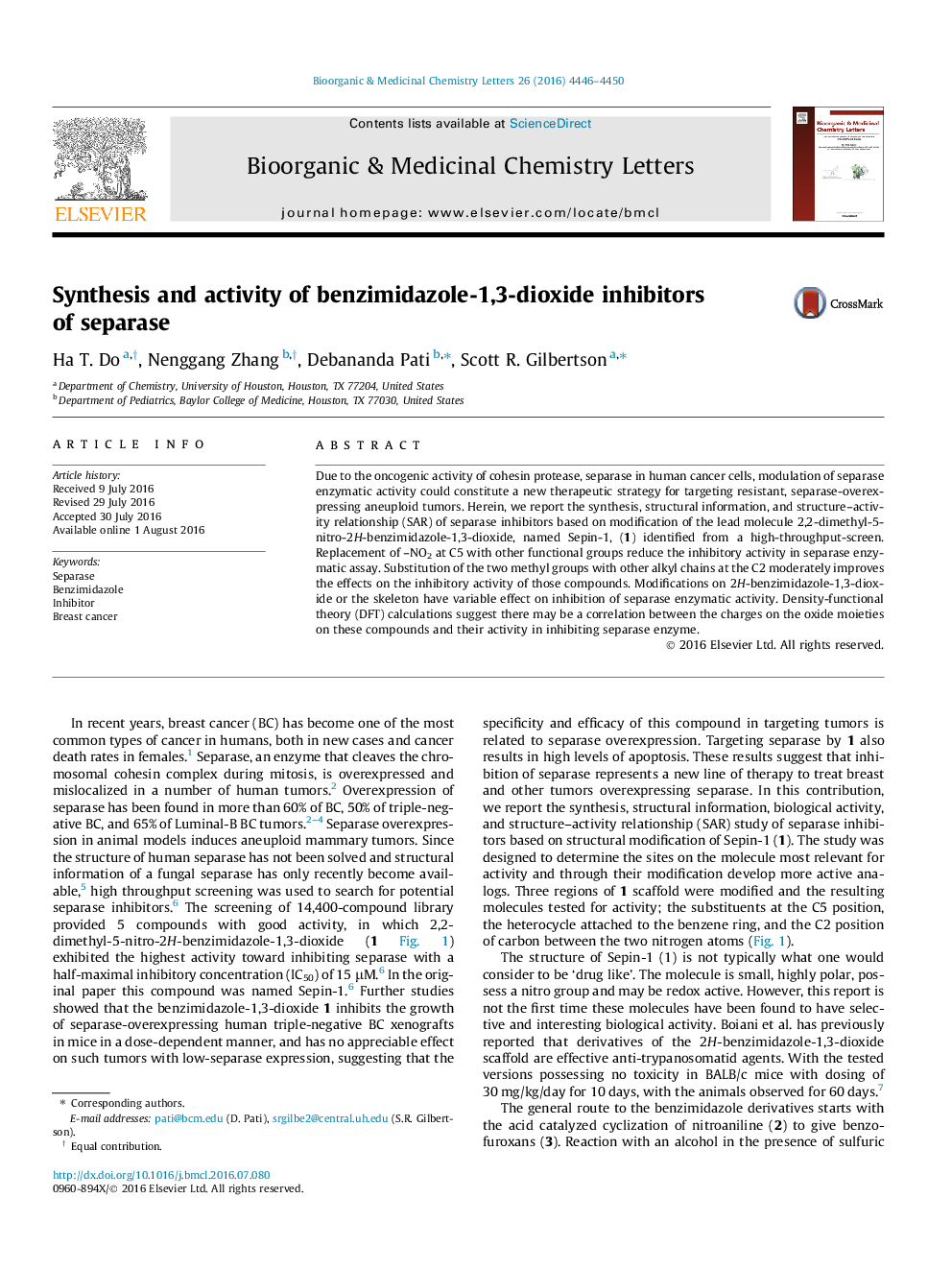| Article ID | Journal | Published Year | Pages | File Type |
|---|---|---|---|---|
| 1369419 | Bioorganic & Medicinal Chemistry Letters | 2016 | 5 Pages |
Due to the oncogenic activity of cohesin protease, separase in human cancer cells, modulation of separase enzymatic activity could constitute a new therapeutic strategy for targeting resistant, separase-overexpressing aneuploid tumors. Herein, we report the synthesis, structural information, and structure–activity relationship (SAR) of separase inhibitors based on modification of the lead molecule 2,2-dimethyl-5-nitro-2H-benzimidazole-1,3-dioxide, named Sepin-1, (1) identified from a high-throughput-screen. Replacement of –NO2 at C5 with other functional groups reduce the inhibitory activity in separase enzymatic assay. Substitution of the two methyl groups with other alkyl chains at the C2 moderately improves the effects on the inhibitory activity of those compounds. Modifications on 2H-benzimidazole-1,3-dioxide or the skeleton have variable effect on inhibition of separase enzymatic activity. Density-functional theory (DFT) calculations suggest there may be a correlation between the charges on the oxide moieties on these compounds and their activity in inhibiting separase enzyme.
Graphical abstractFigure optionsDownload full-size imageDownload as PowerPoint slide
